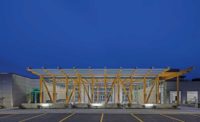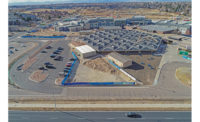Despite ongoing budget woes, RTD kicks into high gear the first of its FasTracks programs, the West Corridor light rail line between Denver and Golden.


After five years of preconstruction planning, work has begun on Denver’s highly anticipated FasTracks program—a 12-year project to expand rail and bus service throughout the Regional Transportation District’s eight-county service area.
Sidetracked into redesign by a budget shortfall, early construction on the 12.1-mile West Corridor light-rail line—the first of 11 projects included in the voter-approved FasTracks—has been under way since mid-2008, and general construction kicked off this fall.
The West Corridor light-rail line will operate between Union Station in downtown Denver and the Jefferson County Government Center in Golden, serving Denver, Lakewood, the Denver Federal Center, Golden and Jefferson County.
“West Corridor is definitely going to relieve a lot of the traffic congestion people have been experiencing for years in the westsuburbs,” says FasTracks spokesperson Pauletta Tonilas. Projections call for 30,000 light-rail riders per day by 2030.
FasTracks is the Denver metro area’s own stimulus package and is “putting people to work,” Tonilas says.
When the complete FasTracks program was presented to voters in 2004, an estimated $4.7 billion was needed for the build-out. Since then an increase in material costs—specifically copper, concrete, steel and diesel-fuel prices—combined with a faltering economy resulting in dramatically lower-than-expected sales tax revenues, have led to a new $6.9-billion price tag by 2017.
The $707-million West Corridor budget is fully funded—including environmental, design, construction and light-rail vehicles—but in order to complete the program, RTD will need to find another funding source, says Tonilas.
Tonilas says that while about half of Denver’s FasTracks program is on its way to being fully funded, the other half will be a challenge to fund without another source of revenue. RTD is in the process of completing an annual program evaluation—updating unit costs and re-evaluating sales tax forecasting based on current economic conditions—to come up with a new financial plan for the RTD board to adopt to keep the project moving forward, Tonilas says.
“This is no different than the state, our country or city having to [annually] come up with expenses and determine how to get where we need to be,” she adds.
But RTD cannot complete its program without more money. “RTD will have to go back to voters to complete the FasTracks projects as originally proposed,” says Tony Milo, executive director of the Colorado Contractors Association.



